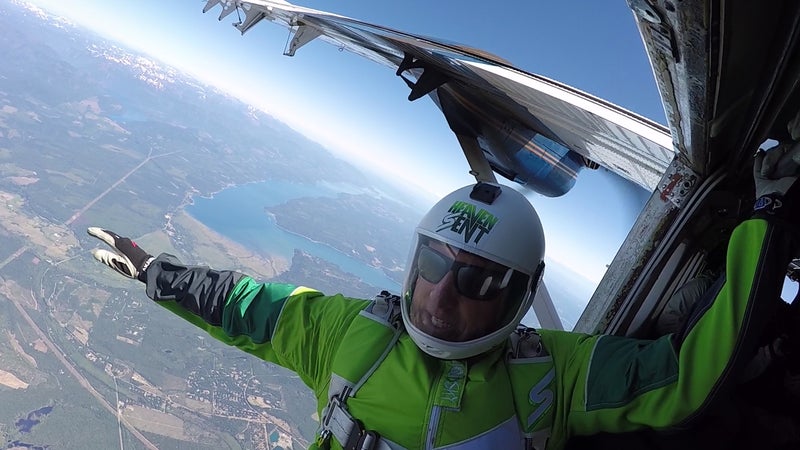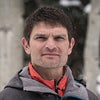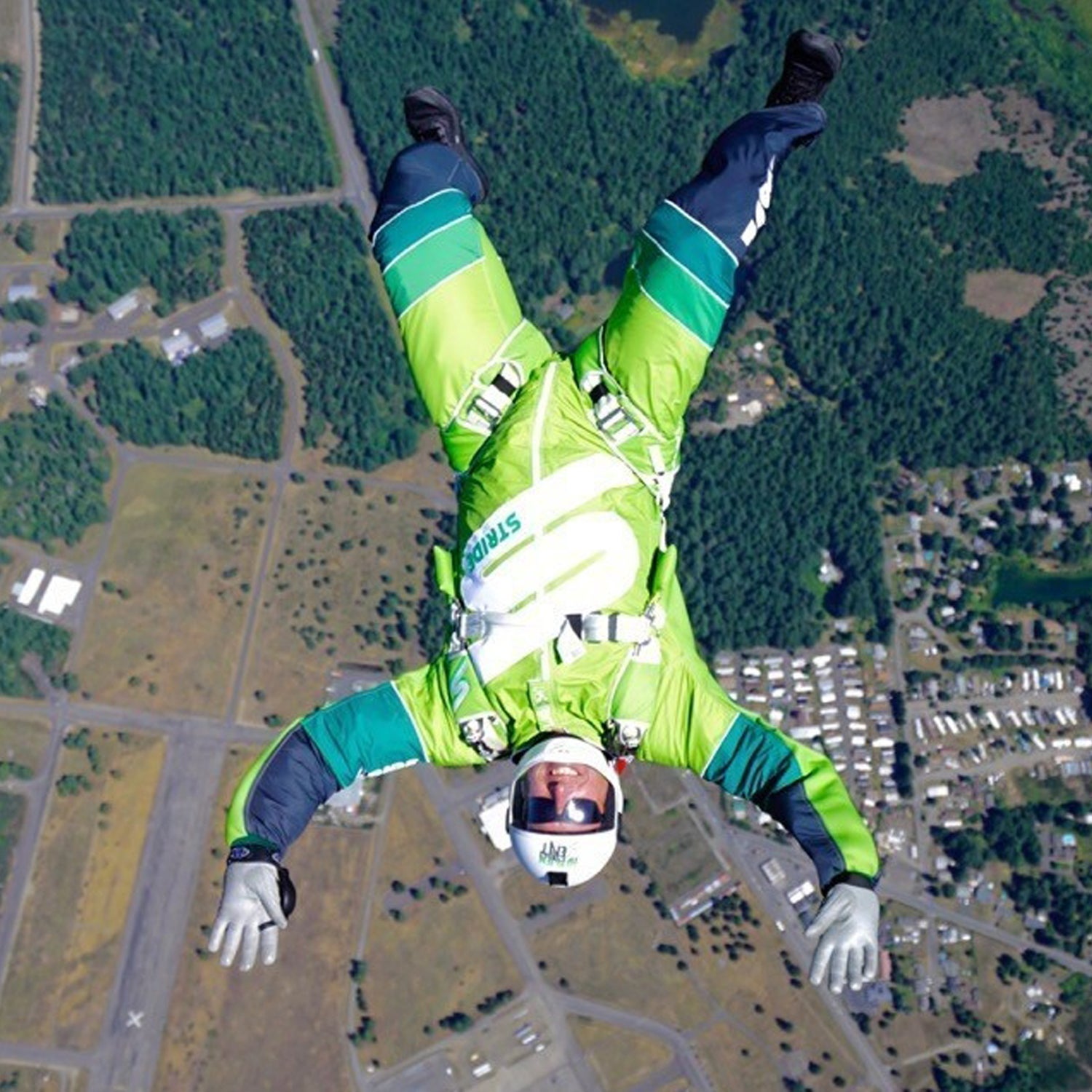When steps out of a Cessna Grand Caravan airplane on July 30, high above Simi Valley, California, he will fall 25,000 feet to the ground—without a parachute. He’ll be aiming for a 10,000-square-foot,��high-tech net specifically��designed to cushion Aikins’ 120 mph fall. If he survives, he’ll become the first person to land a skydive sans chute, shatter the record for the highest freefall descent, and set a new benchmark for what can be achieved when curiosity meets engineering ingenuity.��
Aikins, a 42-year-old aerial luminary and Hollywood stuntman who lives in Seattle, is part of the Red Bull Air Force athlete team and has been planning the stunt since 2014. His attempt will be aired live on Fox in a special called .�����ϳԹ��� tracked him down between training sessions to find out how it will work and why a sane man would agree to plunge five miles to earth without a parachute.��
How the Idea Evolved
When the co-creators of Heaven Sent,��marketing guru Jimmy Smith and aerospace physiologist Chris Talley, first approached Aikins about landing a skydive without a parachute, the plan was to build an 800-foot-tall slide and have Aikins land near the top, then glide down to earth. Aikins said no thanks and laughed it off. Then, for two weeks, he kept waking up at night wondering whether it was possible. “If somebody said I had to do it, could I do it?” he recalls thinking. “Is there a way to figure out if it’s possible, and also test it a whole bunch to prove it’s safer than it sounds?”
Eventually Aikins decided he’d have the best chance of survival if he landed in a giant net. He called some engineer friends to get their thoughts on the physics required to cushion his fall: If you wanted to stop 200 pounds of person traveling 120 mph in just 200 vertical feet—roughly how long it takes a parachute to open at terminal velocity—what are the G forces required to do that?��(One G is equivalent to the force of gravity at the earth’s surface.
“They did the math for me and said, ‘It’s actually pretty easy. If you do it over 200 feet, you only have 2.4 G’s, which is nothing,’” Aikins says.��(By comparison, a fighter jet imposes up to nine G’s on a pilot as it accelerates vertically.)��“So I was like, 'Wow. Cool.'” He soon convinced the planning team to ditch the slide and start working on a net he calls the Fly Trap. After a vetting interview with Fox—where, he says, “I felt like I was being evaluated for sanity, which I could totally understand”—the stunt was on.

The Giant Net
Measuring 100 feet on each side, the Fly Trap—basically a huge polyethylene rope net—will be suspended from a quartet of 200-foot-tall, 70-ton cranes at California's Big Sky Ranch, a popular location for filming Westerns and other movies that require wilderness settings.��
Aikins will take off in a Cessna piloted by Dave Kaiser, a longtime friend who has flown him during his training jumps. As the plane nears 25,000 feet in altitude, Aikins will don an oxygen mask. He will use oxygen during his freefall, too, before handing off his mask to his cousin, fellow Red Bull Air Force member , around 15,000 feet. (Farrington and two other support staff will execute jumps alongside Aikin, with parachutes.)
To outline the Fly Trap’s perimeter, as well as a 28-foot-by-28-foot square near the center that Aikins calls the “sweet spot,” Aikins devised an intricate system of PAPI lights (short for Precision Approach Path Indicators), which are commonly used to guide planes on runway landings. The lights will point straight up and use a special lens to give off a red beam on one half and a white beam on the other half. If Aikins sees a red light, he’ll know he is outside the Fly Trap and must shift his trajectory toward the middle of the square. He will also wear headphones that emit a series of beeps—slowly if he is outside the square, faster if he is near the center—to help guide him toward the target.��
How He Hopes to Survive
When Aikins lands, he won’t feel any elasticity in the net itself. Each 1.875-inch square of the Dyneema rope can hold 826 pounds of force on its own, but the material doesn’t stretch. Instead, four compressed air cylinders stationed near the cranes and connected to the Fly Trap via rope and pulleys will cushion Aikins’ impact. The cylinders, a.k.a. air ratchets, are common in the Hollywood stunt world (Aikins has performed stunts in Iron Man 3, Godzilla, and Fast and Furious 7) and Aikins has tested them extensively, dropping a 200-pound dummy into the net from a helicopter dozens of times. He has also jumped into the net himself from 87 feet above it. “The landing was softer than if you stood on a trampoline and just fell onto your back,” he says.��
Roughly one second before he hits the Fly Trap at 120 mph, Aikins will roll so that his back impacts first. The only variable out of his control is the wind. “Anything around 15 mph, we’re starting to get real worried,” he says. “Sixteen to 17 mph is probably our no-go level.”
He estimates he will have 30 friends and family watching from the ground, including his wife and four-year-old son. He says he’s nervous but confident. “I’m treating this like a giant science project,” he says. “I’m doing my eighth-grade science project, but on a massive scale.”
The show, sponsored by Stride Gum, is set to air live from 8 p.m. to 9 p.m. Eastern Time; the jump is scheduled for roughly 8:45.


